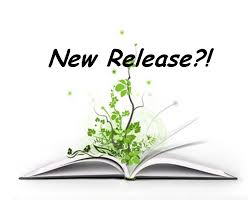In our second blog post, we discussed the benefits of starting your story plan with the time frame that it takes place in. Now that you’ve settled on the when of your story, it’s time to move on to where it takes place.

The location of your setting is going to impact what types of characters to include, the contributing details of everything from the clothing that they wear to the food that they eat, and the dialect that they speak as well as the mundane details such as the name of the town and which street the burned-out drycleaner’s abandoned storefront sits on.
Side Note: What is a contributing detail?
If your story takes place in London, as our sample in the introduction did, you’re more likely to find characters sipping tea in a parlor or drinking room temperature beer and eating blood pudding in a pub than you would if your story is set in 1960’s New York, for example. Conversely, if your story takes place in 1980’s Texas, a large reunion on the family ranch is going to seem more relatable if the characters are chowing down on barbeque than it would if they were passing around a sushi platter. These are the types of things I refer to as contributing details. They aren’t the meat-and-potatoes of the storyline, but they do offer a layer of relatability that readers rely on for context.
Moving on…
Is your setting a real place or an imaginary one?
(For the purposes of this post, an imaginary town set in an existing city, state, or country is considered a real location.)
Many writers assume that it is less work to create an imaginary world than it is to spend the time researching real locations. There are times where it makes better sense to create a storyverse from scratch, as it were – such as The Lord of the Rings or The Harry Potter books – but for authors who are not writing in a science fiction or fantasy realm, the benefits of using a real setting can out-weigh the convenience of not having to research a location.
When you use a real place as a basis of your setting, you are able to weave historic and location details as well as social and civic information into your writing to lend an air of authenticity and realism. For example, in your story about a modern-day person escaping from a kidnapping ring in the south, you could have them following the trail of the underground railroad using a sightseeing map they found skittering along the ground as they snuck out of a window that their captors forgot to lock.
On the other hand, when you create your own storyverse from scratch, you have to create the entire backstory of the location(s) in the book as well or the story could end up leaving the reader with questions that you didn’t anticipate.
How many locations can one book have?
When you choose a location for your book, it can be as broad or as narrow as you wish as long as the story doesn’t move beyond the borders.
What does that mean, exactly?
It means that when you, the author, set up a specific location in your story, the majority of your action should take place in the location you have spent the most time preparing your reader for.
In our example, we used the dank, dimly-lit alleys of a high-crime section of London. Now, that doesn’t mean that most (or all) of our action has to take place behind Bow Street Number 4, but it does mean that the author has to choose – and be prepared to work through – a specific setting plan.
While not the only possibilities, the standard options are as follows:
- The most common setting profile is that the story takes place primarily in the city of London. There may be short reaches outside of the city – to the surrounding countryside or even to neighboring countries – but the story will begin and end in the city of London.
This is usually the easiest plan to work with as it only requires the in-depth description (and the related research) of one location.
- The flash-back method allows the author to use the initial description of Viago skulking in the dark, crime-ridden part of London and then relocate the story to a different part of the country or even to another continent entirely.
This is a less common approach and requires not only in-depth research on the introductory location and the actual story location, but will also need a reasonable explanation for the relationship between those locations.
For example: if the prologue to the story fades out on our rough-around-the edges private dick waiting to pounce on potential evil-doers in the early morning hours in London. Then the first chapter opens with a description of Viago in a suit and tie, sitting at the second desk as a criminal prosecutor in a Scottish courtroom. Your readers will struggle to connect with the story unless you provide a viable tie-in.
- The third and least common method involves having multiple primary locations for your story. This is also the most difficult and time-consuming option.
To expand on our example above, imagine our story opened with Viago in the London alley, but this time, in addition to his thin t-shirt and cheap running shoes, he is also wearing a knit mask pulled down over his face and has a pair of rusty handcuffs stuffed into the pocket of his fake leather jacket as he glares at the rain-soaked news article in his hand. He grits his teeth as he reads the headline that screams “London petty thief escapes Scottish justice for the third time!”.
Suddenly our down-on-his-luck private investigator looks suspiciously like a masked vigilante and it would make more sense to turn to chapter one and find him in an abutting country (Scotland) working as a prosecutor who, frustrated with trying to punish the criminal element that crosses the border at will, spends some nights taking justice into his own hands.
You can see how this story plan will work, but it will also require twice the preparation, research, and, yes, twice the actual words making their way to paper, to be successful. (If I didn’t explain this clearly, please comment and I’ll be sure to respond.)
Choosing the location (or fine-tuning your created location)
To be sure that your location fits your storyline, consider the following questions:
- Did this location exist when your story took place? Or can you tweak the storyline to make the history fit?
- Could my events actually happen there?
I don’t mean the actual story; after all, that’s why we call it fiction. Consider the hard attributes of the location that you chose (weather, access to natural resources, etc.) and try to picture the storyline unfolding. If you can’t, its unlikely that your readers can.
For example: If your story is about a couple that meets on a mountain hike and forms an unlikely romance as they weather a blizzard together after their guide is eaten by a mountain lion, Hawaii might not be a good choice. Conversely, if your story takes place on a cruise ship that has been commandeered by terrorists and taken out to sea, it probably needs to begin in an area that has a sea port instead of, say, Iowa.
- Does the actual history or your created backstory support the attitudes and behaviors of the characters in it? If your story is placed in an area that is known for xenophobic or racist attitudes, having a colorblind society would be great, but isn’t going to be realistic.
(Side note: This, of course, is something that can be addressed through your storyline.)
- Do the details that are important to your story work here? Do (did) the real people in that area dress, speak, act, or <insert verb here> the way your characters do? This is a good place to consider the issues like sushi in Texas or blood pudding in New York.
Now that you have your when and your where, in our next post we’ll puzzle through who is there. Keep on writing!





